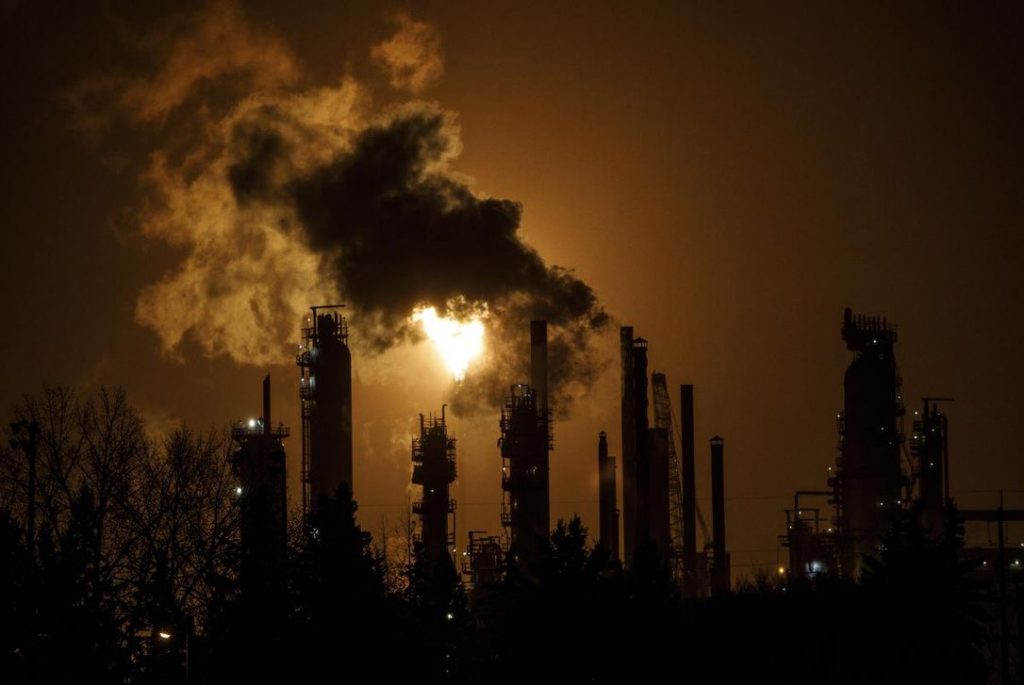Alex Ballingall
By Alex BallingallOttawa Bureau
Thu., April 22, 2021timer5 min. read
updateArticle was updated 4 days ago
OTTAWA—Canada will now strive to slash greenhouse gas emissions by 40 to 45 per cent below 2005 levels by 2030, marking a significant increase in climate ambition that still falls short of new targets set by countries like the United Kingdom and United States.
Prime Minister Justin Trudeau declared the new target Thursday during the opening session of a virtual climate summit hosted by U.S. President Joe Biden.
Canada had previously maintained the goal set by the previous Conservative government — 30 per cent below 2005 levels by 2030 — though Trudeau’s Liberals have promised since 2019 that they would exceed it. Now that pledge comes with a new official goal, as Trudeau described climate change as an “existential threat” for humanity.
“With hard work and a solid plan, Canada is now set to blow past our old target,” Trudeau said, crediting his government’s climate plan that includes a national carbon price and a plan to phase out coal-fired electricity by 2030.
“We will continually strengthen our plan and take even more actions on our journey to net-zero by 2050.”
The aim of the summit is to rally countries around the world to slash emissions more deeply over the next nine years and prevent the catastrophic extremes of climate change by limiting global warming to 1.5 C above pre-industrial temperatures.
In his opening address to the summit, Biden described a “moral imperative” to act against the threat of climate change and confirmed the United States will now aim to reduce its emissions in half by the end of the decade. That’s a significant escalation of its previous target of around 27 per cent below 2005 levels by 2025, and one of several examples of countries declaring more aggressive goals at the summit.
“No nation can solve this crisis on their own,” Biden said. “All of us, and particularly those of us who represent the world’s largest economies, we have to step up.”
Earlier this week, the United Kingdom declared it will now aim to slash greenhouse gas pollution to 78 per cent below 1990 levels by 2030, and the European Union is pushing for 55 per cent below 1990 levels by then.
Japan also announced Thursday that it will aim to cut emissions almost in half by 2030, a significant increase from its previous goal of 26 per cent below 2013 levels by 2030.
Canada’s new goal fell short of those set by the U.S., EU and U.K., and several environmental groups expressed disappointment after they called on Ottawa to declare a 60 per cent reduction target for 2030 this week.
Speaking in Toronto, Green party Leader Annamie Paul slammed the federal government for failing to keep pace with other countries with its new climate goal. She said Canada is already behind the European Union and U.K. in slashing emissions, and must do more to fulfil its “fair share” of the global emissions reductions that leading scientists deem necessary over the next nine years.
The United Nations Intergovernmental Panel on Climate Change has said “unprecedented” change across “all aspects of society” is necessary to cut global emissions to 45 per cent below 2010 levels by 2030 and achieve net-zero by mid-century.
“Canada is abandoning the opportunity not only to lead, but also to position Canada in a competitive way with respect to its international allies,” Paul said. “When did our government give up on trying to be the best, on trying to have the most ambitious targets?”
NDP Leader Jagmeet Singh also criticized the new target during Question Period Thursday, calling the new Liberal climate plan the worst among G7 countries.
Environment Minister Jonathan Wilkinson defended the government’s new goal as consistent with his view of Canada’s fair share in the global effort to slash emissions, calling it both “attainable” and “ambitious.”
Canada’s new target is lower than that of the U.S. because of the makeup of Canada’s economy, Wilkinson said, adding that the U.S. can cut emissions easily by switching from coal-fired power, while most of Canada’s electricity grid is already from cleaner energy.
“Our plan, based on the structure of the economy, is more ambitious than what the Americans are talking about,” he said.
After tabling its new budget this week, the Liberal government claims Canada is already on track to cut emissions to 36 per cent below 2005 levels by 2030, as it pushes along with the U.S. and a host of other countries to achieve “net-zero” emissions by the middle of the century.
Those future cuts come from measures the Trudeau Liberals have implemented and announced since they took power in 2015. Canada has implemented a national minimum carbon price that is set to climb from $40 per tonne of emissions this year to $170 per tonne in 2030. It is also creating regulations to require cleaner fuel, restrict methane leaks from oil and gas production, and spending tens of billions of dollars in the coming years on public transit, conservation of nature, the promotion of green technology, and programs to help heavy industries reduce their greenhouse gas pollution.
Wilkinson admitted the government has to find further reductions to close the new gap between the current projected reductions of 36 per cent and the new target of at least 40 per cent over the next nine years. He ruled out increasing the carbon price more than it is currently scheduled to go up, and also said the government won’t make clean fuel regulations stricter.
Instead, he said the government will look to make steeper cuts from fossil fuel emissions, which have grown significantly in recent decades and prevented Canada from making overall reductions to annual greenhouse gas pollution.

